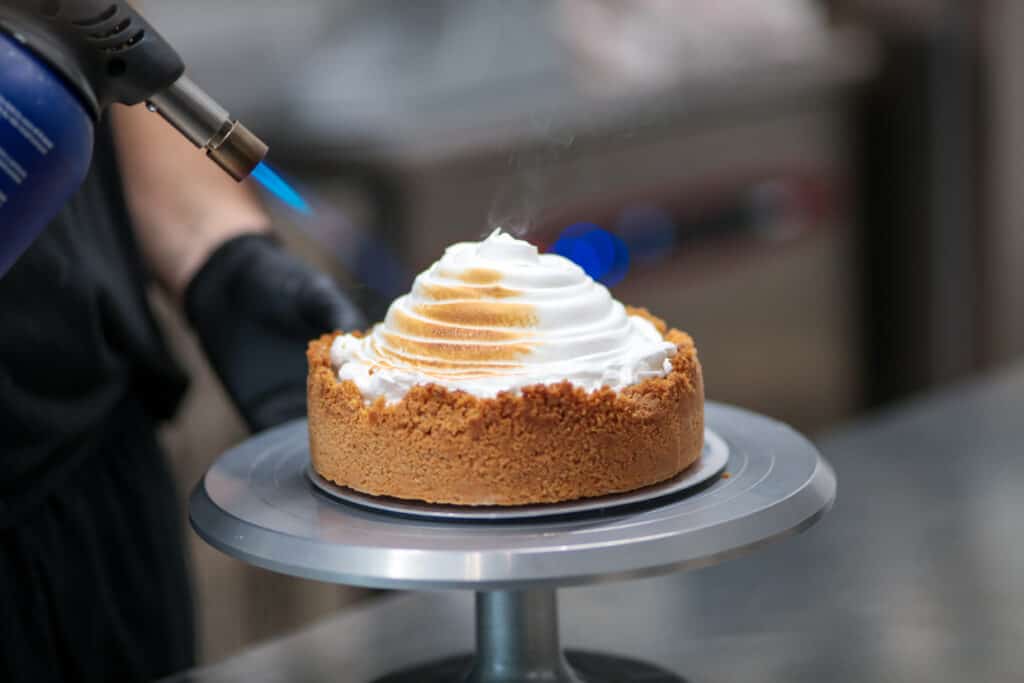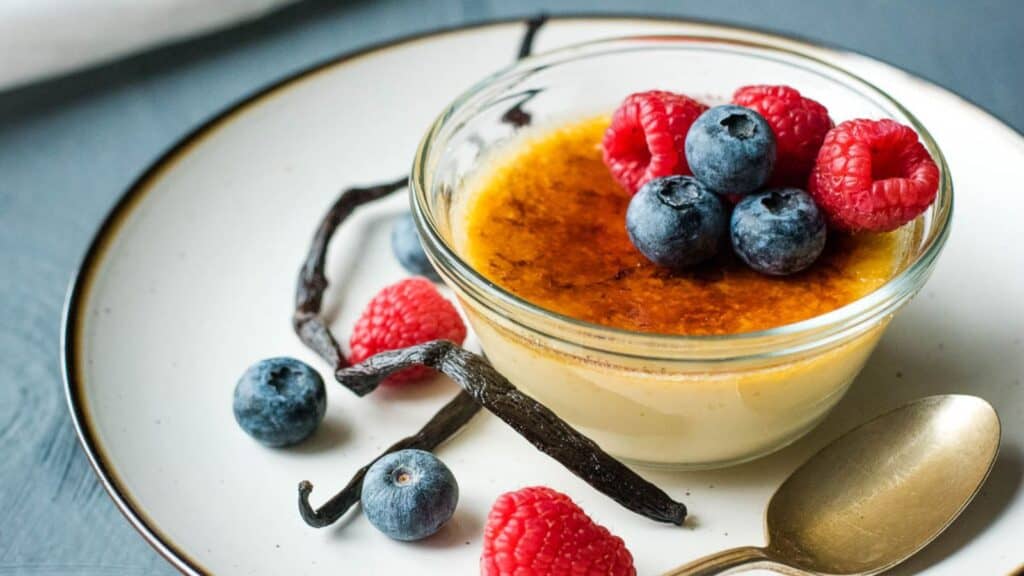Using a kitchen torch can unlock a whole new set of techniques and possibilities in your kitchen. Whether you’re an experienced chef or a home cook, this handy tool helps you achieve perfect caramelization, char and crispness that is often impossible with other methods.

Using a kitchen torch
Many think kitchen torches are only for fancy desserts like crème brûlée, but they are incredibly versatile. From adding a smoky flavor to vegetables to perfecting the finish on a steak, mastering this tool can significantly enhance your cooking experience.
Whenever you use a kitchen torch, you must be cautious and focus on what you are doing — do not multitask. Hold the torch a consistent distance from the surface, apply the flame evenly and keep it in constant motion with a smooth back-and-forth movement. Never leave an active torch unattended, and be sure to read the rest of the safety tips at the bottom of this article after you check out these seven expert ways to use your torch and bring the heat to your kitchen.
Roast peppers quickly
Using a kitchen torch to roast peppers is not only faster than heating the grill or broiler, but it’s also easier. Pick up the pepper with tongs, aim the flame at the skin and rotate the pepper until the skin is charred. Pop the peppers into a paper bag for a few minutes, and the skins will easily peel off. Roasted peppers are a versatile ingredient that adds a smoky flavor to various dishes.
Caramelize sugar
Caramelizing sugar with a torch is not just for making the perfect crackly burnt sugar topping iconic on a crème brûlée. It can add an element of elegance, turning something as simple as fresh fruit into a quick dessert by dipping it in plain white sugar and using your torch to melt it into a crunchy treat. You can also use the torch to caramelize the natural sugars in sweet potatoes and carrots or to melt the glaze on your holiday ham.

Brown meringue
A kitchen torch is an easy way to achieve a perfectly even golden-brown meringue. Whether you are topping a berry pie or citrus tart or want to brown a marshmallow topping, this gadget will give you much more precision and prevent burn spots that can occur in a hot oven. Be careful to keep the torch in constant motion to prevent burning.
Peel tomatoes and other thin-skinned fruits and vegetables easily
The intense heat of a kitchen torch makes peeling thin-skinned fruits and vegetables like tomatoes, peaches and eggplants a breeze. Like roasting peppers, char the skin just enough to loosen it, then allow it to cool before gently peeling it away. You may find handling these fruits and vegetables easier by piercing with a fork to hold and rotate them instead of using tongs. While not necessary, an ice bath can chill the produce rapidly after torching.
Brown a casserole
A kitchen torch can quickly brown the top of a casserole, which is especially helpful during busy holidays when everything needs to be finished in the oven. Whether you are dealing with mashed potatoes on a shepherd’s pie or breadcrumbs on your grandma’s secret mac and cheese recipe, you can let the kitchen torch do the browning as long as the dish is fully cooked.
Flame sear fish
According to Michelle C from Sift & Simmer, “A great way to utilize a kitchen torch is to lightly sear fish for Japanese aburi sushi, which is a partially grilled or flame-seared sushi. This method consists of quickly torching the surface of the fish or seafood to create a slightly charred exterior while leaving the interior mostly raw. This imparts a slight smoky flavor and textural contrast, which enhances the fish’s natural sweetness.”
Melt cheese
I would argue that the best part of French onion soup is the melty, cheesy layer of gruyere that sits on top, and I’ll also say that using a torch to finish it off is easier for the average home cook than using the broiler. As with many other examples, it’s all about the precision and control that a torch provides that you can’t get from a broiler. Don’t limit yourself to just soup when it comes to melting cheese. You can also use it to finish a lasagna, make nachos or finish off the middle of a

Torch safety
When using a torch, kitchen safety is the number one priority. Handle your torch carefully and store it properly to prevent accidents and ensure a safe working environment for you and your loved ones.
The area must be well-ventilated with good airflow, and the flame must be kept away from kitchen towels, aprons, curtains or any other flammable material. Read the instruction manual so you know how to light your torch correctly and how the safety switch functions. Never point a lit torch at yourself or others, and never leave an active or hot torch unattended.
Before storing your torch, ensure it is completely turned off and allow time to cool down. To prevent accidental injuries, store the torch upright and out of reach of children, pets and irresponsible adults. Store your fuel canisters in a clean, dry place, away from heat sources and direct sunlight.
Renee N Gardner is the creative mastermind behind Renee Nicole’s Kitchen, a recipe blog based on seasonal ingredients, dedicated to helping home cooks build their kitchen confidence to become home chefs. When Renee isn’t writing, developing recipes or photographing food, you’ll find her in the garden, traveling or enjoying the outdoors with her husband, son and two dogs.